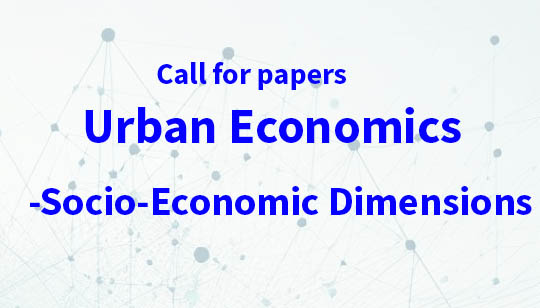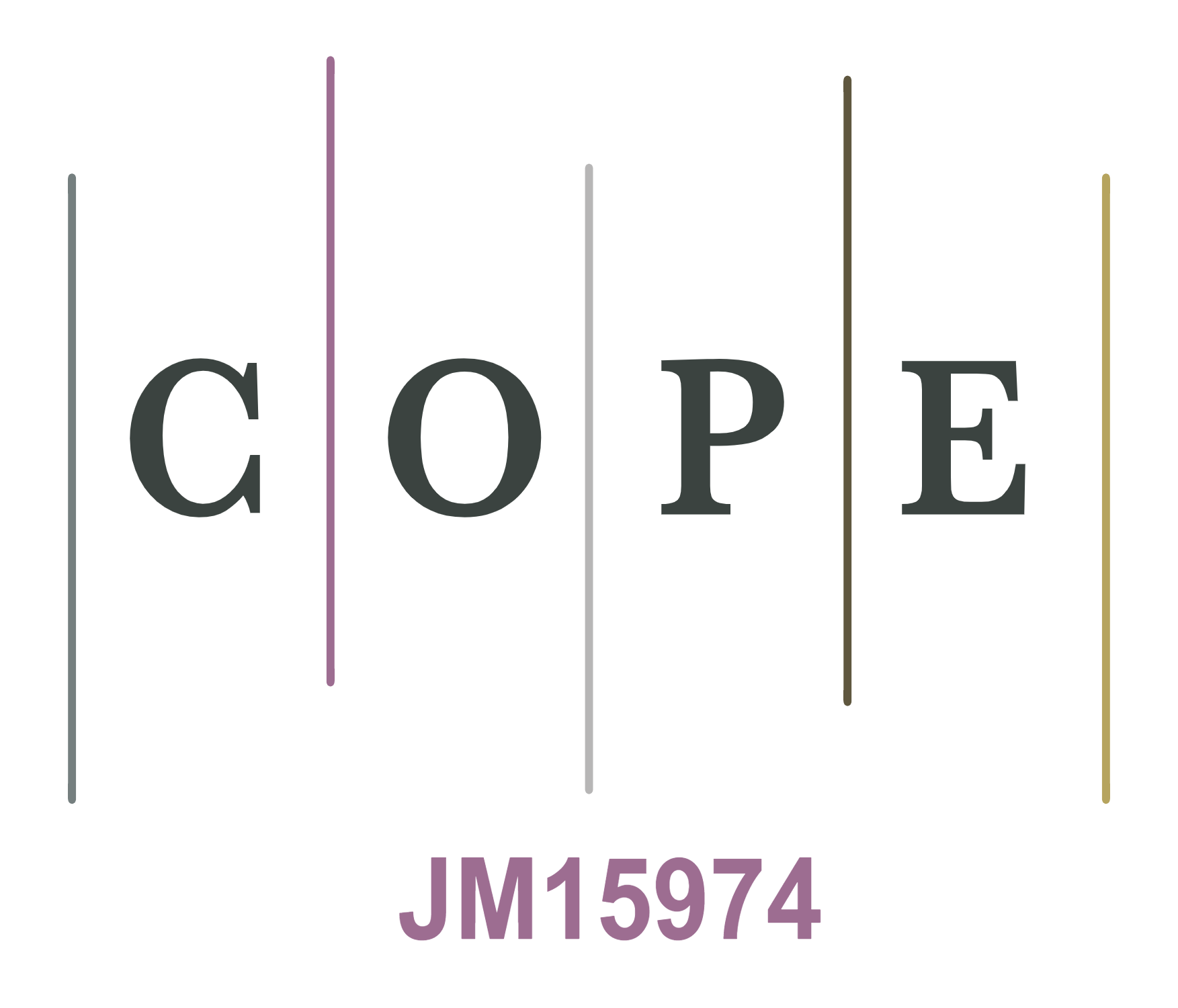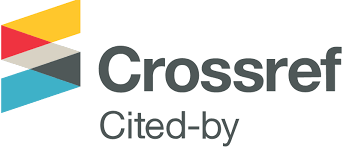Assessing Key Factors Influencing Rental Housing Choices and Affordability for Economically Weaker Sections (EWS): A Neighborhood Study in Delhi
DOI:
https://doi.org/10.25034/ijcua.2025.v9n1-5Keywords:
Affordable Rental Housing, Economically Weaker Sections (EWS), Housing Choice Determinants, Principal Component Analysis, Urban Housing PolicyAbstract
The Economically Weaker Section (EWS) is constrained to live in slums and unauthorized colonies due to the lack of suitable housing options and affordability issues. Various factors such as building characteristics, financial constraints, and social considerations influence individuals' decisions regarding accommodation. A neighborhood in Delhi was chosen for a study to assess the importance of these factors for the EWS in rental housing. A total of 383 sample surveys were carried out to examine the socioeconomic variables and key factors influencing their choice of location, supplemented by 10 in-depth interviews to uncover hidden factors not typically found in existing literature. Principal Component Analysis was employed to identify the most crucial factors influencing accommodation choices. The study findings indicate that while the physical, locational, and economic aspects of rental housing are crucial, social factors also play a significant role. This research will offer invaluable insights to urban planners and policymakers to facilitate the provision of rental housing based on individual preferences in formulating housing policies.
Downloads
References
Ajzen, I. (1991). The theory of planned behavior. Organizational Behavior and Human Decision Processes, 50(2), 179-211. https://doi.org/10.1016/0749-5978(91)90020-T DOI: https://doi.org/10.1016/0749-5978(91)90020-T
Assaf, S. A., Bubshait, A. A., & Al-Muwasheer, F. (2010). Factors affecting affordable housing cost in Saudi Arabia. International Journal of Housing Markets and Analysis, 3(4), 290-307. https://doi.org/10.1108/17538271011080628 DOI: https://doi.org/10.1108/17538271011080628
Azmi, N., & Bujang, A. A. (2021). The gap between housing affordability and affordable house: A challenge for policy makers. Planning Malaysia, 19(2), 139–152. https://doi.org/10.21837/pm.v19i17.1016 DOI: https://doi.org/10.21837/pm.v19i17.1016
Batool, N., Wani, M. U. D., Shah, S. A., & Dada, Z. A. (2023). Theory of planned behavior and value-belief norm theory as antecedents of pro-environmental behaviour: Evidence from the local community. Journal of Human Behavior in The Social Environment, 1-17. https://doi.org/10.1080/10911359.2023.2205912 DOI: https://doi.org/10.1080/10911359.2023.2205912
Bischoff, K., & Reardon, S. F. (2014). Urban planning and socioeconomic segregation: How residential preferences and policies shape neighborhood inequality. Urban Studies, 51(10), 2107-2126. https://doi.org/10.1177/0042098013493489
Byun, G., & Ha, M. (2016). The factors influencing residential satisfaction by public rental housing type. Journal of Asian Architecture and Building Engineering, 15(3), 535–542. https://doi.org/10.3130/jaabe.15.535 DOI: https://doi.org/10.3130/jaabe.15.535
Chen, X., & Jim, C. Y. (2022). Environmental influences on residential choices: Analyzing the role of green spaces and pollution in urban living preferences. Landscape and Urban Planning, 222, 104415.
Clark, W. A. V., & Dieleman, F. M. (1996). Households and housing: Choice and outcomes in the housing market. Rutgers University Press.
Clark, W. A. V., & Huang, Y. (2019). Life cycle and residential mobility: Examining the role of life stages in residential relocation. International Journal of Urban and Regional Research, 43(2), 409-428. https://doi.org/10.1111/1468-2427.12653 DOI: https://doi.org/10.1111/1468-2427.12653
Coolen, H., & Hoekstra, J. (2001). Values as determinants of preferences for housing attributes. Journal of Housing and the Built Environment, 16(3-4), 285-306. https://doi.org/10.1023/A:1012534210703 DOI: https://doi.org/10.1023/A:1012587323814
Delhi Development Authority. (2021). Master plan for Delhi-2041 (draft). Delhi Development Authority. https://dda.gov.in/planning/master-plan-delhi-2041-draft
Dubey, S., Sahoo, K. C., Dash, G. C., Sahay, M. R., Mahapatra, P., Bhattacharya, D., Del Barrio, M. O., & Pati, S. (2022). Housing-related challenges during COVID-19 pandemic among urban poor in low- and middle-income countries: A systematic review and gap analysis. Frontiers in Public Health, 10, Article 1029394. https://doi.org/10.3389/fpubh.2022.1029394 DOI: https://doi.org/10.3389/fpubh.2022.1029394
Ezennia, I. S., & Hoşkara, Ş. (2019). Exploring the severity of factors influencing sustainable affordable housing choice: Evidence from Abuja, Nigeria. Sustainability, 11(20), 5792. https://doi.org/10.3390/su11205792
Ezennia, I. S., & Hoşkara, Ş. (2019). Exploring the severity of factors influencing sustainable affordable housing choice: Evidence from Abuja, Nigeria. Sustainability, 11(20), 5792. https://doi.org/10.3390/SU11205792 DOI: https://doi.org/10.3390/su11205792
Galster, G. (1997). Comparing demand-side and supply-side housing policies: Sub-market and spatial perspectives. Housing Studies, 12(4), 561–577. https://doi.org/10.1080/02673039708720916 DOI: https://doi.org/10.1080/02673039708720916
Ghumare, P. N., Chauhan, K. A., & Yadav, S. M. (2021). Exploring preferences for affordable housing criteria importance among EWS in India. International Journal of Housing Markets and Analysis, 14(4), 759-778. https://doi.org/10.1108/IJHMA-06-2020-0073 DOI: https://doi.org/10.1108/IJHMA-06-2020-0073
Gilbert, A. (2016). Rental housing: The international experience. Habitat International, 54, 173–181. https://doi.org/10.1016/j.habitatint.2015.11.025 DOI: https://doi.org/10.1016/j.habitatint.2015.11.025
Government of India, Ministry of Housing and Urban Poverty Alleviation (MoHUPA). (2012). Report on the technical group on urban housing shortage (TG-12) (2012-2017).
Gupta, M., & Gupta, R. (2017). Demand for rental housing: Evidence from slum settlements in Delhi. Urbanisation, 2(1), 9-27. https://doi.org/10.1177/2455747117695203 DOI: https://doi.org/10.1177/2455747117700942
Gupta, N. (2018). The challenges in "affordable housing" for urban poor in India – Deciphering the “housing for all by 2022”: A comprehensive approach to decrement housing shortage – A case study of Delhi. International Journal of Scientific & Engineering Research, 9(7), 493-500. https://doi.org/10.14299/ijser.2018.07.001
Hancock, K. E. (1993). Can pay? Won't pay? or economic principles of 'affordability'. Urban Studies, 30(1), 127–145. https://www.jstor.org/stable/43195877 DOI: https://doi.org/10.1080/00420989320080081
Haruna, A. C. (2023). Gender analysis of sustainable housing choices of rental household heads in Abuja Municipal Council, Nigeria. CSID Journal of Infrastructure Development, 6(1). https://doi.org/10.7454/jid.v6.i1.1083 DOI: https://doi.org/10.7454/jid.v6.i1.1083
Henderson, J. V., & Ioannides, Y. M. (1983). A model of housing tenure choice. The American Economic Review, 73(1), 98–113. http://www.jstor.org/stable/1803929
Hoelscher, K., & Aijaz, R. (2016). Challenges and opportunities in an urbanising India. Indian Journal of Human Geography, 40(1), 39-48. https://doi.org/10.1177/2233865916637297 DOI: https://doi.org/10.1177/2233865916637297
Ibrahim, R. A. (2024). Residential quality and revealed housing preferences in Lagos. In The Urban Book Series (pp. 117-155). https://doi.org/10.1007/978-3-031-47432-3_7 DOI: https://doi.org/10.1007/978-3-031-47432-3_7
Jansen, S. J., Coolen, H. C., & Goetgeluk, R. W. (Eds.). (2011). The measurement and analysis of housing preference and choice. Springer Science & Business Media. https://doi.org/10.1007/978-90-481-8894-9 DOI: https://doi.org/10.1007/978-90-481-8894-9
Jha, R. (2020). Urban rental housing in India: Towards ‘housing for all’. National Institute of Public Finance and Policy.
Kanyepe, J. (2023). The nexus between residential density, travel behavior, and traffic congestion in developing metropolitans: A case study of Harare, Zimbabwe. Journal of Contemporary Urban Affairs, 7(1), 103–117. https://doi.org/10.25034/ijcua.2023.v7n1-7 DOI: https://doi.org/10.25034/ijcua.2023.v7n1-7
Kashina, E., Globa, S. B., & Byrdin, D. A. (2022). Rental housing market: Dynamics and prospects of development. Izvestiya Vysshikh Uchebnykh Zavedeniy (Proceedings of Higher Education Institutions). https://doi.org/10.32683/0536-1052-2022-766-10-82-93 DOI: https://doi.org/10.32683/0536-1052-2022-766-10-82-93
Khaire, M., & Jha, S. K. (2022). Examining homeownership bias in Indian housing policy using frame analysis. Environment and Urbanization ASIA, 13(1), 113-125. https://doi.org/10.1177/09754253221079527 DOI: https://doi.org/10.1177/09754253221079527
KPMG and NAREDCO. (2012). Bridging the urban housing shortage in India (pp. 1–20). http://www.risingstraits.com/wp-content/uploads/2016/10/Urban-housing-shortage-in-India.pdf
Kundu et al. (2012). Report of the Technical Group on Urban Housing Shortage (TG-12) (2012-17). Ministry of Housing and Urban Poverty Alleviation (MoHUPA).
Lantz, H. R., & Rossi, P. H. (1957). Why families move: A study in the social psychology of urban residential mobility. Free Press. DOI: https://doi.org/10.2307/348888
Mack, C. C. (2013). Rental housing. Financial Analysts Journal, 5(1), 22–25. https://doi.org/10.2469/faj.v5.n1.22 DOI: https://doi.org/10.2469/faj.v5.n1.22
Ministry of Housing and Urban Affairs (MOHUA). (2020). Affordable rental housing complexes: Operational guidelines. https://arhc.mohua.gov.in/filesUpload/Operational-Guidelines-of-ARHCs.pdf
Ministry of Housing and Urban Affairs (MOHUA). (2021). Pradhan Mantri Awas Yojana (Urban), Housing for All Mission: Scheme guidelines. https://pmay-urban.gov.in/uploads/guidelines/62381c744c188-Updated-guidelines-of-PMAY-U.pdf
Mottelson, J. (2023). On informal housing supply restrictions and livelihood in informal settlements: Implications for sustainable development. Sustainable Development, 31(5), 3566-3578. https://doi.org/10.1002/sd.2611 DOI: https://doi.org/10.1002/sd.2611
Mukherjee, A., Dasgupta, S., & Das, A. (2020). State of urban poor rental housing in India and emerging policy trends. Centre for Policy Research. https://cprindia.org/workingpapers/state-of-urban-poor-rental-housing-in-india-and-emerging-policy-trends/
Naik, M. (2015). Informal rental housing typologies and experiences of low-income migrant renters in Gurgaon, India. Environment and Urbanization ASIA, 6(2), 154-175. https://doi.org/10.1177/0975425315591425 DOI: https://doi.org/10.1177/0975425315591425
National Institute of Urban Affairs (NIUA). (2021). Baseline report: Enabling strategic plan - Master plan for Delhi 2041. National Institute of Urban Affairs.
Nguyen, Q. N., Hoang, T. H. V., & Mai, V. N. (2022). Applying the theory of planned behavior to analyze household energy-saving behavior. International Journal of Energy Economics and Policy, 12(5), 287-293. https://doi.org/10.32479/ijeep.13396 DOI: https://doi.org/10.32479/ijeep.13396
Nooraini, Y., David, O. T., & Norsiah, A. A. (2018). Housing preferences and choice in emerging cities of developing countries. Journal of Housing and the Built Environment, 10(1), 48-58. https://www.semanticscholar.org/paper/Housing-Preferences-and-Choice-in-Emerging-Cities-Yusoff-Taiwo/8644ef91ea47665eccc5ceb96b37de851b4791d5
Nugroho, S., Djunaedi, A., & Iskandar, D. A. (2018). Preferensi pemilihan perumahan di pinggiran kota Surakarta berdasarkan motivasi pembelian rumah. TAKODA, 10(1), 11-24. https://doi.org/10.21776/UB.TAKODA.2018.010.01.2 DOI: https://doi.org/10.21776/ub.takoda.2018.010.01.2
OECD. (2019). OECD economic surveys: India 2019. OECD Publishing. https://doi.org/10.1787/554c1c22-en DOI: https://doi.org/10.1787/554c1c22-en
Olanrewaju, A., & Woon, T. C. (2019). An exploration of determinants of affordable housing choice. International Journal of Housing Markets and Analysis, 10(5), 703-723. https://doi.org/10.1108/IJHMA-11-2016-0074 DOI: https://doi.org/10.1108/IJHMA-11-2016-0074
Olayiwola, A. M., & Ajala, O. A. (2022). Correlation between socio-economic characteristics and housing quality of residential neighbourhoods in Akure, Southwest Nigeria. Journal of Contemporary Urban Affairs, 6(2), 217–231. https://doi.org/10.25034/ijcua.2022.v6n2-8 DOI: https://doi.org/10.25034/ijcua.2022.v6n2-8
Opoku, R., & Abdul-Muhmin, A. G. (2010). Housing preferences and attribute importance among low-income consumers in Saudi Arabia. Habitat International, 34(2), 219–227. https://doi.org/10.1016/j.habitatint.2009.08.006
Opoku, R., & Abdul-Muhmin, A. G. (2010). Housing preferences and attribute importance among low-income consumers in Saudi Arabia. International Journal of Housing Markets and Analysis, 3(2), 136-155. https://doi.org/10.1108/17538271011041487 DOI: https://doi.org/10.1016/j.habitatint.2009.09.006
Patel, B., Byahut, S., & Bhatha, B. (2018). Building regulations are a barrier to affordable housing in Indian cities: The case of Ahmedabad. Journal of Housing and the Built Environment, 33(1), 175–195. https://doi.org/10.1007/s10901-017-9552-7 DOI: https://doi.org/10.1007/s10901-017-9552-7
Peter, J. S., & Lizieri, C. (2011). Preference construction and housing choice: The role of the estate agent. Social Science Research Network. https://doi.org/10.2139/SSRN.1754419 DOI: https://doi.org/10.2139/ssrn.1754419
Ramudu, Y. J., Lakshmi, N. T., Balakotaiah, C., & Rambabu, M. (2023). State wise status of urban slums in India: Census data. International Journal of Applied Research. https://doi.org/10.22271/allresearch.2023.v9.i1e.10511 DOI: https://doi.org/10.22271/allresearch.2023.v9.i1e.10511
Ren, X. (2017). Governing the informal: Housing policies over informal settlements in China, India, and Brazil. Housing Policy Debate, 27(3), 396–411. https://doi.org/10.1080/10511482.2016.1247105 DOI: https://doi.org/10.1080/10511482.2016.1247105
Rossi, P. H. (1980). Why families move. Sage Publications.
Roy, D., & ML, M. (2020). Housing for India’s low-income urban households: A demand perspective. Indian Council for Research on International Economic Relations (ICRIER). http://icrier.org/pdf/ES/ES_Housing_for_India.pdf
Schwanen, T. (2020). Impact of transportation accessibility on residential choices and urban development. Urban Studies, 57(4), 817-835. https://doi.org/10.1177/0042098010366875
Singla, H. K., & Bendigiri, P. (2019). Factors affecting rentals of residential apartments in Pune, India: An empirical investigation. International Journal of Housing Markets and Analysis, 12(6), 1028-1054. https://doi.org/10.1108/IJHMA-12-2018-0097 DOI: https://doi.org/10.1108/IJHMA-12-2018-0097
Taiwo, D. O., & Misnan, S. H. (2020). Factors influencing supply of affordable housing in Nigerian cities using confirmatory factors analysis. International Journal of Built Environment and Sustainability, 7(3), 11–21. https://doi.org/10.11113/ijbes.v7.n3.499
Taiwo, D. O., Olugbenga, O., & Misnan, M. S. (2019). Factors influencing supply of affordable housing in Nigerian cities using confirmatory factors analysis. International Journal of Built Environment and Sustainability, 7(3), 37–46. https://doi.org/10.11113/ijbes.v7.n3.499 DOI: https://doi.org/10.11113/ijbes.v7.n3.499
Taiwo, O., Yusoff, N., & Aziz, N. (2018). Housing preferences and choice in emerging cities of developing countries. Journal of Advanced Research in Applied Sciences and Engineering Technology, 10(1), 23–31. https://doi.org/10.37934/araset.10.1.2331
Tiwari, P., Rao, J., & Day, J. (2016). Development paradigms for urban housing in BRICS countries. In Development Paradigms for Urban Housing in BRICS Countries. https://doi.org/10.1057/978-1-137-44610-7 DOI: https://doi.org/10.1057/978-1-137-44610-7
Tiwari, P., Tiwari, P., & Rao, J. (2020). The housing conundrum in India. Global Research Unit Working Paper No. 2020-016. City University of Hong Kong, Department of Economics and Finance, Global Research Unit.
United Nations (UN), Department of Economic and Social Affairs (Population Division). (2019). World urbanization prospects, the 2018 revision. United Nations. https://population.un.org/wup/Publications/Files/WUP2018-Report.pdf
van Ham, M. (2012). Economics of housing choice. In Handbook of Regional and Urban Economics (Vol. 5, pp. 42-46). Elsevier. https://doi.org/10.1016/B978-0-08-047163-1.00094-1 DOI: https://doi.org/10.1016/B978-0-08-047163-1.00094-1
Van Ham, M., & Manley, D. (2012). Segregation, choice-based letting, and social housing: How housing policy can affect the segregation process. IZA Discussion Paper No. 6372. https://doi.org/10.2139/ssrn.2015188 DOI: https://doi.org/10.2139/ssrn.2015188
Waddell, P. (2018). Socioeconomic factors in residential choice. Journal of the American Planning Association, 84(2), 181-198.
Yates, J., Wulff, M., & Reynolds, M. (2004). Changes in the supply of and need for low-rent dwellings in the private rental market. Australian Housing and Urban Research Institute (AHURI), Issue 5, June.
Yusoff, N., Taiwo, D. O., & Abdul Aziz, N. (2018). Housing preferences and choice in emerging cities of developing countries. Journal of Housing and the Built Environment, 10(1), 48-58.
Zhou, J. (2023). The private sector in the rental housing market. BCP Business & Management. https://doi.org/10.54691/bcpbm.v43i.4631 DOI: https://doi.org/10.54691/bcpbm.v43i.4631
Published
Issue
Section
License
Copyright (c) 2024 Ekta , Prasanth Vardhan

This work is licensed under a Creative Commons Attribution 4.0 International License.






















